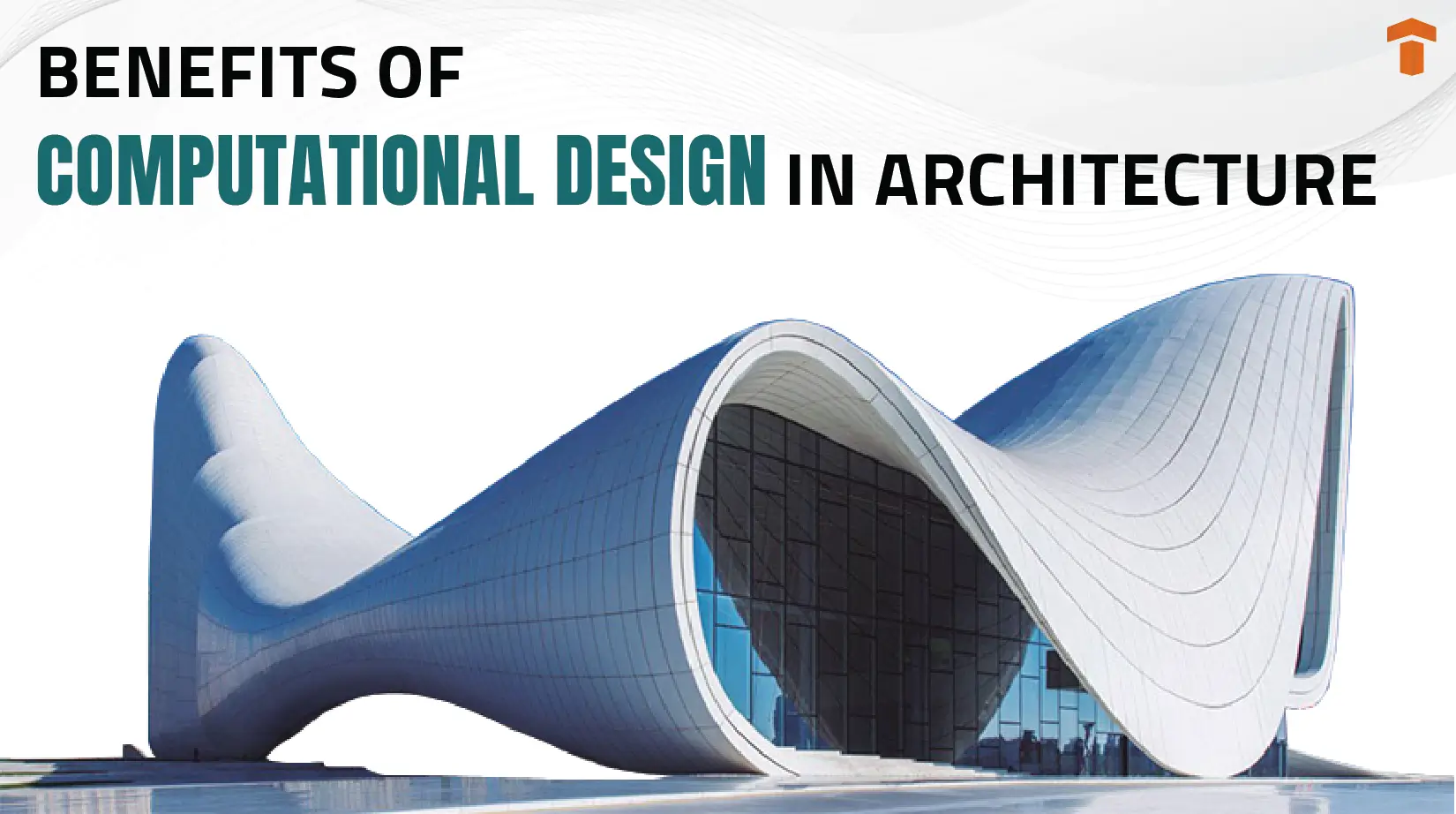The Benefits Of Computational Design In Architecture
Mar 08, 2024
Category: BIM / Digitization / Automation
Admin

In the Architecture, Engineering, and Construction (AEC) sector, the quick advancement of technology is changing the way we operate. The advancement of this evolution has been sped by the use of computational design into architecture. It has come a long way, from centralized machinery to decentralized applications. Explore the many advantages of CD in architecture in this blog.
What Is Computational Design?
Computational design (CD) is the process of creating architectural concepts and designs via the use of digital tools and algorithms. It uses mathematical formulas to generate structures, forms, and patterns. As a result, a whole new realm of skillful, accurate, and inventive ideas emerge. These are based on parameters and algorithms.
Types Of Computational Design
The discipline of this design is undergoing significant evolution and change as new standards are set. The Parametric Design, Generative Design, and Algorithmic Design are the three subsets of CD that exist today.
Parametric Design
Parametric design is an interactive design approach that uses a set of rules and parameters to govern a design model. The rules define how various design elements relate to one another.
The dimensions, angles, and weights of the design model are project-specific numbers known as parameters. The algorithms automatically update all related design aspects in response to changes in a parameter, taking into account the predetermined dependencies.
Generative Design
Using user-defined inputs, generative design is an iterative method that generates many design concepts. This addresses predetermined objectives. Similar to parametric design, the inputs are rules as well as parameters that specify design needs.
When using generative design, the user additionally enters success measures to assess the outcome. Based on these measures, cloud computing and artificial intelligence (AI) produce tens or even hundreds of design possibilities.
Algorithmic Design
The design process known as “algorithmic design” is algorithm-driven. As a kind of generative design, the word is frequently synonymous with computational design.
Algorithmic design creates architectural models by using algorithms, which are collections of rules that ascertain a problem’s solution. Stated differently, a system is defined by a set of rules as opposed to a definition of each component separately.
Advantages Of Computational Design In Architecture
There are various benefits to computational design in the field of architecture. Among them are:
Quicker Iterations And Changes In The Design
The potential of CD to enable quick revisions and iterations of architectural designs is one of its most notable advantages. Engineers and architects can modify a variety of interconnected design parameters by using parametric modeling. This saves a great deal of time while making manual changes.
Improved Documentation
Using a CD makes it easier for designers to manage project documentation. Architects are able to record the crucial processes involved in creating a masterpiece. At different stages of the design process, they are able to retain documentation. A structured database is accessible to AEC designers through CD tools.
Developing Sustainable Structures
A building project’s sustainability is crucial, particularly when working with industrial structures. Intelligent building management systems are used by CD, which can assist design experts in making well-informed decisions in this area. With CD, an easy-to-use system may assess inputs from many project aspects.
Enhanced Productivity And Efficiency
Computational design improves efficiency and productivity in the design process by automating repetitive or difficult operations. Computational design algorithms serve to establish guidelines and limitations for the design process. This minimizes the possibility of errors that may arise from human modifications in addition to saving time.
Conclusion
The field of architecture is changing as a result of the benefits of CD. Computational structural design provides previously unseen chances for creativity, productivity, and innovation by combining art and technology.
Thus, the potential for creative design solutions seems limitless, and the field of architectural engineering has a bright future due to CD’s constantly developing capabilities.
About TechnoStruct Academy:
TechnoStruct Academy is the educational arm of TechnoStruct, LLC, a registered design engineering firm based in California. It offers specialized BIM training programs for architecture, MEP, and BIM Management.
Our BIM Certification Courses
BIM-Ready+: Become a BIM Management professional specialized in managing all ASMEPF projects working with open BIM and interoperability with a credible BIM Manager Certification.
BIM-Ready Complete: Become a BIM Engineer specialized in all ASMEPF (Architectural, Structural, Mechanical, Electrical, Plumbing, and Fire Protection) disciplines working with open BIM and interoperability.
BIM-Ready (Arch+Structure): Specialize in BIM Fundamentals, Conceptual Design, Sustainable Design, Design Development, and Construction Documentation in the BIM Environment with this BIM Architect Course.
BIM-Ready (MEP): Become an MEP BIM Engineer specializing in BIM Fundamentals, HVAC, Electrical, Plumbing and Fire Fighting, Design, and Modeling in a BIM Environment.
Bexel Manager Certification Program: This program teaches you about BEXEL Manager, a software that brings together key 3D, 4D, 5D, and BIM features, making it quick and easy to embrace BIM processes and technology for speedy project implementation.
FAQs
Is computational design the architecture’s way of the future?
The future of architecture lies in CD. Gaining proficiency with this method entails going where others are unable to go and achieving goals. In the upcoming years, experts and firms with the ability to design using parametric architecture will have an abundance of business opportunities.
What is the architectural application of computational design?
A cutting-edge strategy called computational design makes use of software and algorithms to improve the design and building processes. With the use of cutting-edge technologies like Blender, Dynamo, and others, it maximizes and simplifies the construction of intricate, sustainable structures with more accuracy and efficiency.
Why is computational design so crucial?
With the help of CD, designers may tackle the difficulties of contemporary engineering and design with stronger tools and techniques. This leads to the creation of more sustainable, efficient, and effective work.








